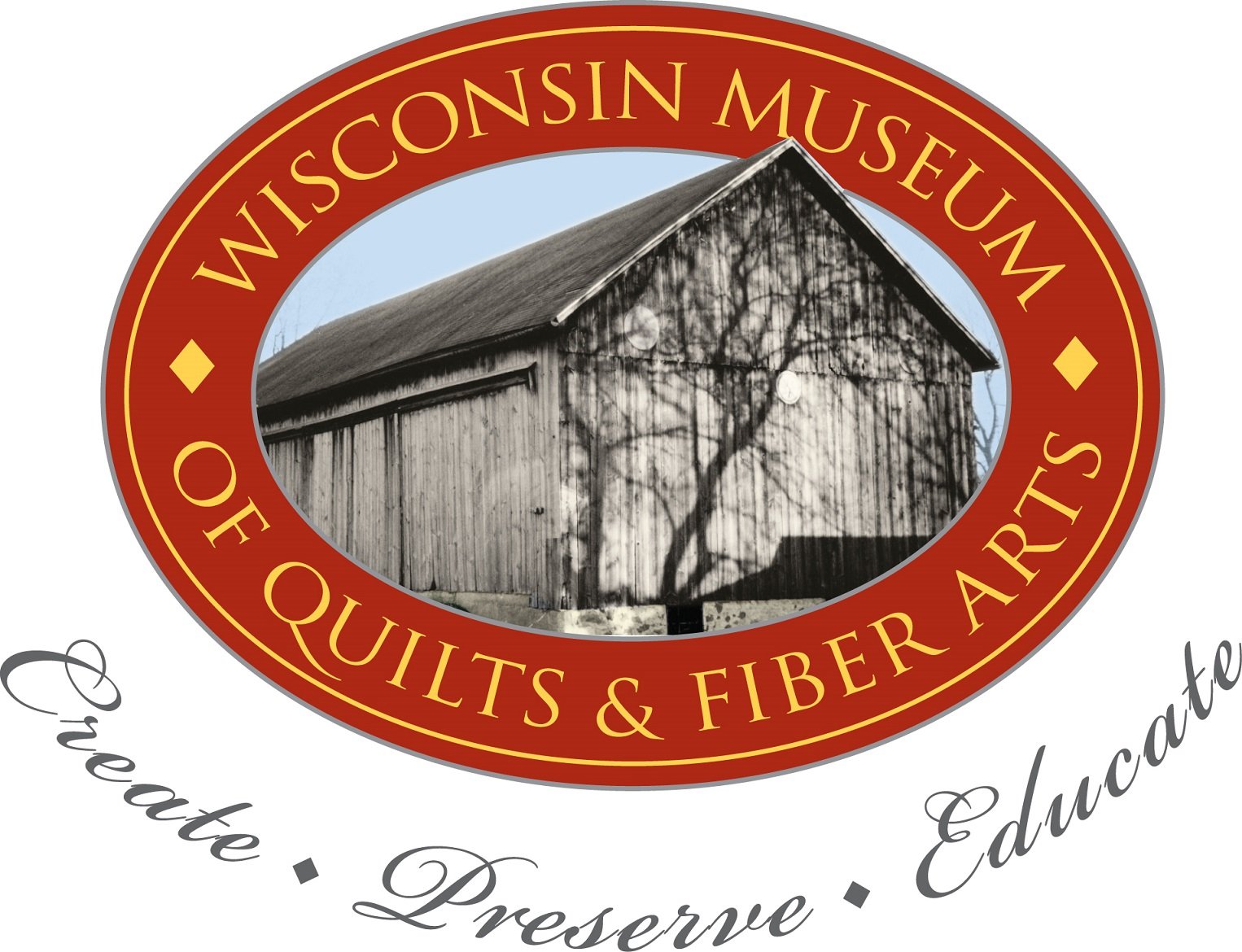Hooked by Design on Exhibit, December 9, 2021–February 20, 2022
Wisconsin Museum of Quilts & Fiber Arts Presents First-Ever Museum Exhibition of Contemporary Rugs
Cedarburg, Wis. – Hooked by Design (December 9, 2021, through February 20, 2022) at the Wisconsin Museum of Quilts & Fiber Arts brings together contemporary fiber artists whose work speaks to the expansive landscape of today’s rug hooking community. Thirteen artists, hailing from as close as Milwaukee to as distant as Toronto, Canada, have contributed a stunning array of over forty hooked rugs to this exhibition, the first exhibition in the museum’s history to focus solely on rugs.
Rug hooking is considered a time-honored tradition, one that became popular in North America in the mid-nineteenth century as a way to provide warmth and comfort in the home. An early form of recycling, rugs were often made of re-used scraps of clothing and other remnant fibers, most notably wool. Recycling wool and dying it to achieve a desired palette is still practiced by rug hookers today. As the works in Hooked by Design demonstrate, however, current artists are pushing the boundaries of the medium by incorporating a multitude of materials, from lace and silk to metallic thread and plastic.
Not solely for use underfoot anymore, contemporary hooked rugs are often called “paintings in wool.” Artists are deeply enmeshed in new approaches to rug hooking, resulting in a range of styles, from abstraction to portraits and landscapes. This creative variety is on view in the exhibit.
Connections to everyday life are present in Tracy Jamar’s rugs. Jamar often uses repurposed personal items that on one level have “no worth” (worn-out socks, torn and faded t-shirts, and discarded clothing), but through her process are transformed and given new life and value. Portraits and observations from the artists’ lived experiences runs throughout the work of Mary Tooley Parker and Susan Feller. Parker illustrates scenes from her daily life through colorful vignettes and still-life pictures taken from her home. An ambulatory experience is apparent in the work of Susan Feller, who takes detailed nature studies near her house in West Virginia.
The natural world informs the work of Rachelle LeBlanc, Kris McDermet, Liz Alpert Fay, and Capri Boyle Jones. Both LeBlanc and McDermet’s work address themes of ecology and conservation. McDermet’s rugs honor nature through through intricately designed patterns of her own creation. While LeBlanc’s subject matter often draws attention to the degradation and pollution of our waters. Alpert Fay’s work distills moments in nature, from the turning of the seasons to ripples in a pond. Similarly, Boyle Jones’s rugs evoke ethereal, still-life scenes based on the sea.
Two rug hookers take a narrative, almost fantastical approach to their imagery. Heather Goodchild’s practice involves exploring the rituals, regalia, and symbols of world religions and non-denominational societies. Ann Willey’s rugs appear like illustrations in children’s stories, with portraits of women and young children pictured amid imaginary flora and fauna.
Several of the artists featured are from Wisconsin and are active members in the Cream City Rug Hooking Guild. Among them include Lyle Drier, Sharon Felten, Joyce Krueger, and Mary McGrath. Guilds are important for the transfer of knowledge about rug hooking, with many artists learning the beginnings of the craft through guild classes. The works by the Wisconsin artists are as varied as today’s rug hooking, yet show the artists’ nuanced and long-standing dedication to the art form.
Generous support for Hooked by Design is provided by Jan Schley. 2021 to 2022 programming at WMQFA is supported by the Wisconsin Arts Board, National Endowment for the Arts and Kohler Foundation Inc.
Exhibition Highlights
Rachelle LeBlanc, Taking Flight, 2021; wool and yarn, recycled wool, linen, red earthenware, high fire glaze, and wire; 48 x 44 x 1/2 in. Courtesy of the artist.
Liz Alpert Fay, Early Spring - Fiddleheads and Flowers, 2011; wool and cotton on linen; 44 x 74 x 1 in. Courtesy of the artist.
Heather Goodchild, Night at St. Anne’s, 2020–21; wool on burlap; 53 x 33 in. Courtesy of the artist.
About the Wisconsin Museum of Quilts & Fiber Arts
The Wisconsin Museum of Quilts & Fiber Arts (WMQFA), located just east of historic downtown Cedarburg, Wisconsin, is dedicated to creating, preserving, and displaying cultural treasures and educating the public about the artistic, cultural, historic, and social importance of quilts and fiber arts. A primary mission is to teach people of all ages and abilities the time-honored traditions of fiber arts such as quilting, weaving, embroidery and knitting. Our 1850s farmstead setting has allowed us to combine preservation of craft with preservation of historical agriculture buildings, offering a unique setting for enjoying an afternoon, taking a class, attending a lecture, or playing in a farm setting. The WMQFA is a 501(c)3 non-profit. For more information go to www.wiquiltmuseum.com.
